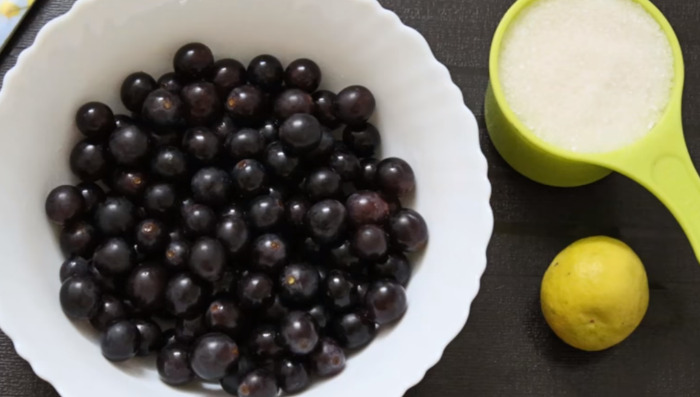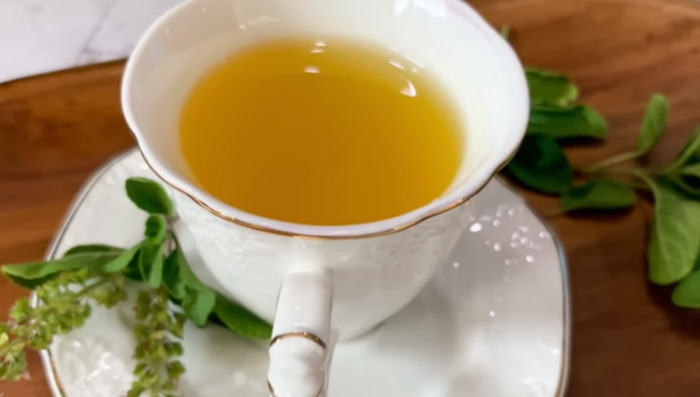Grapes, nature’s sweet little gems, aren’t just for snacking. When transformed into juice, they offer a refreshing beverage packed with nutrients. But is all grape juice created equal? Not quite. While many of us relish the vibrant color and tantalizing taste of grape juice, it’s essential to distinguish between the types available.
From the deep purple Concord variety to the lighter green-skinned grapes, each offers a unique flavor profile. Moreover, the nutritional content can vary, especially when comparing 100% fruit juice to those with added sugars. As we delve deeper into this topic, we’ll uncover the true essence of grape juice, its benefits, and potential downsides. So, whether you’re a health enthusiast or simply curious, let’s embark on this enlightening journey together.
Recipe of Grape juice:
Ingredients:
Here are the ingredients for making grape juice:

- Black Grapes: 500 to 550 grams, ensuring they are preferably organic to minimize pesticide exposure.
- Lemon Juice: 1 teaspoon, optional, to add a subtle tang and balance the sweetness of the grapes.
- Black Salt: 2 to 3 pinches, optional, to enhance the flavor profile subtly.
- Raw Sugar or Powdered Jaggery: As required, ensuring sweetness is adjusted according to the natural sweetness of the grapes.
- Water: Use as needed, especially if the juice feels too concentrated or strong.
Equipment:
These Equipment are used for creating healthy grape juice:
- Blender: To achieve a smooth, fine consistency of the grapes without chunks.

- Strainer: Preferably lined, to ensure the juice is separated effectively from the pulp.
- Bowl: To collect the strained juice, ensuring it’s of adequate size to prevent spills.
- Spoon: To press the pulp against the strainer, maximizing juice extraction.
- Glasses or Mugs: For serving the freshly prepared grape juice.
- Mesh Strainer or Colander: To rinse the grapes thoroughly before blending.
Instructions:
Follow these step by step instructions for making grape juice:
1.Rinse the Grapes: Start by thoroughly rinsing your organic black or green grapes using a mesh strainer or colander. Ensure all dirt and impurities are washed off.
2.Blend: Transfer the cleaned grapes to a blender. Blend until you achieve a fine consistency, ensuring no grape chunks remain.
3.Strain the Juice: Pour the blended grape mixture through a strainer placed over a bowl. Use a spoon to press the pulp, extracting as much juice as possible.

4.Adjust to Taste: Taste the juice. If it’s too concentrated, dilute it with water. If it lacks sweetness, add sugar or your preferred sweetener.
5.Add Tang: For an extra layer of flavor, stir in some lemon juice.
6.Serve: Pour the grape juice into glasses or mugs. For an added touch, sprinkle a pinch of black salt in the glasses. Serve immediately, either chilled or with ice cubes.
7.Garnish: If desired, garnish the juice with a few grapes or fresh mint leaves for presentation and added flavor.
Health benefits of Grape juice:
Grape juice offers numerous health benefits:
- Rich in Antioxidants: Grape juice is packed with antioxidants, particularly resveratrol and flavonoids, which combat oxidative stress.
- Heart Health: Regular consumption can improve heart health by increasing HDL (good) cholesterol levels and protecting against artery damage.
- Boosts Immunity: Grapes are a good source of vitamin C, which strengthens the immune system, helping the body ward off illnesses.
- Improves Digestion: The fiber and organic acids in grape juice can promote healthy digestion and prevent constipation.
- Enhances Brain Function: The antioxidants in grape juice may delay the onset of neurodegenerative diseases and improve brain function.

- Supports Hydration: Being a liquid, it aids in hydration, especially when consumed during hot weather or after workouts.
- Bone Health: Contains minerals like potassium, calcium, and magnesium, which are vital for maintaining healthy bones.
- Skin Benefits: The antioxidants in grape juice can improve skin health, reduce wrinkles, and prevent skin diseases.
Side Effects of Grape juice
While grape juice is often hailed for its health benefits, it’s crucial to consume it mindfully and be aware of potential side effects:
- Allergic Reactions: Some individuals may experience allergic reactions like itching, swelling, or difficulty breathing.
- High Sugar Content: Grape juice can be high in sugars, potentially impacting blood sugar levels.
- Caloric Density: Despite its health benefits, it’s also calorie-dense, which might be a concern for weight management.
- Tooth Decay: The sugars can contribute to tooth decay if oral hygiene is not maintained.
- Digestive Issues: Excessive consumption might lead to digestive issues like diarrhea or upset stomach.

- Drug Interactions: Grape juice can interact with certain medications, altering their effectiveness.
- Acidity: Some people might experience acid reflux or heartburn due to its acidic nature.
- Iron Absorption: It can inhibit the absorption of iron, potentially impacting those with anemia.
Expert Tips For Fresh Grape Juice
Crafting the perfect grape juice requires a blend of the right ingredients and technique. With these expert tips, you’re well on your way to a refreshing, healthful drink.
- Organic Grapes: Opt for organic grapes to ensure minimal pesticide residue. If using non-organic, wash thoroughly.
- Sweetness: Adjust sugar based on grape sweetness. Remember, natural is always better.
- Straining: Use a fine mesh strainer to ensure a smooth consistency, free from pulp and skin bits.
- Freshness: Consume immediately after juicing. Fresh juice offers the best flavor and nutritional value.
- Water: If the juice feels too strong, dilute with a bit of cold water.
- Tang: A dash of lemon or lime juice can balance the sweetness and add a refreshing tang.
- Storage: Drink fresh for maximum benefits. If storing, consume within 24 hours and stir before serving.
- Salt: A pinch can enhance flavor, but it’s optional based on your preference.
- Spices: Feel adventurous? Add a hint of black pepper, cayenne, or ginger for a spicy twist.
The Bottom List:
Embarking on the journey of homemade grape juice creation, we’ve navigated through the essentials, from the simplicity of ingredients to the finesse in preparation. The key lies in the freshness of grapes, ensuring a blend that’s both nutritious and delightfully refreshing. Our exploration through the health benefits illuminated the vitality and wellness encapsulated in every sip, while also acknowledging the need to consume mindfully, considering potential side effects.
Expert tips provided a roadmap to navigate common pitfalls, ensuring your grape juice is not just a drink but an experience. Crafting a perfect glass of grape juice is an art, balancing sweetness, tang, and flavor while preserving the wholesome goodness grapes provide. May every glass you pour be a celebration of flavor, health, and the simplicity of nature’s offerings. Cheers to a fruitful journey of juicing!
FAQs:
Can I substitute honey for sugar?
Absolutely, honey can seamlessly substitute sugar in your grape juice, offering a distinct, natural sweetness while also bestowing its own array of health benefits. When substituting, consider honey’s pronounced sweetness by using it sparingly—start with a smaller quantity and gradually adjust to your palate. Not only does it enhance the flavor, but it also introduces a new dimension of nutritional value, making your refreshing beverage a tad healthier and more nuanced in flavor.
How long does homemade grape juice last?
Homemade grape juice, when stored properly, can retain its freshness and nutritional benefits for up to 5-7 days in the refrigerator. Ensure it’s kept in a clean, airtight container to preserve its vitality and flavor. For extended storage, consider freezing the juice, which can extend its life for up to 3-6 months. Always prioritize a quick sniff and a small taste before enjoying it, ensuring it’s still in prime condition for consumption.
How to use grape juice?
Versatile grape juice can be utilized in various delightful ways. Sip it as a refreshing beverage, use it to create vibrant popsicles, or incorporate it into smoothies for an extra flavor punch and nutrient boost. It can also elevate sauces and marinades, providing a sweet and tangy balance. For a delightful dessert, consider grape juice jelly or use it as a base for sorbets. The possibilities are vast, ensuring that this nutritious, homemade juice can be enjoyed in numerous, delicious ways.
How to use the leftover grape solids?
Don’t discard those leftover grape solids! They can be repurposed in numerous culinary ways. Consider incorporating them into your baking, adding them to muffins, bread, or pancakes for an extra burst of grape flavor and a moist texture. Alternatively, blend them into a smoothie, ensuring no nutrient goes to waste. You might also stir them into yogurt or oatmeal, offering a delightful, fruity twist to your breakfast. These grape remnants can elevate your dishes, ensuring zero waste while maximizing flavor and nutritional benefits.
Related Read: Grapefruit Juice Recipe: Benefits And Nutritional Value!







